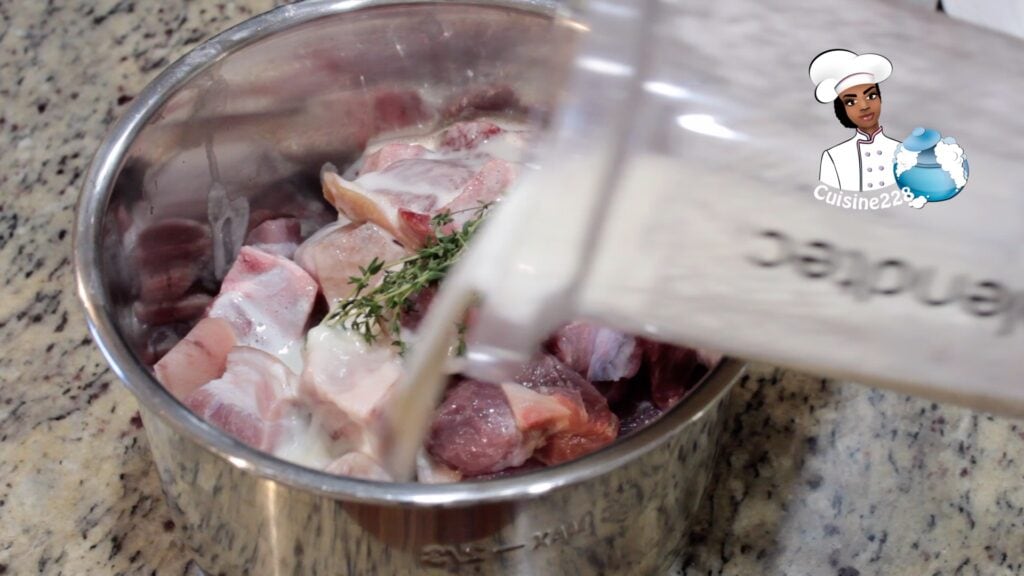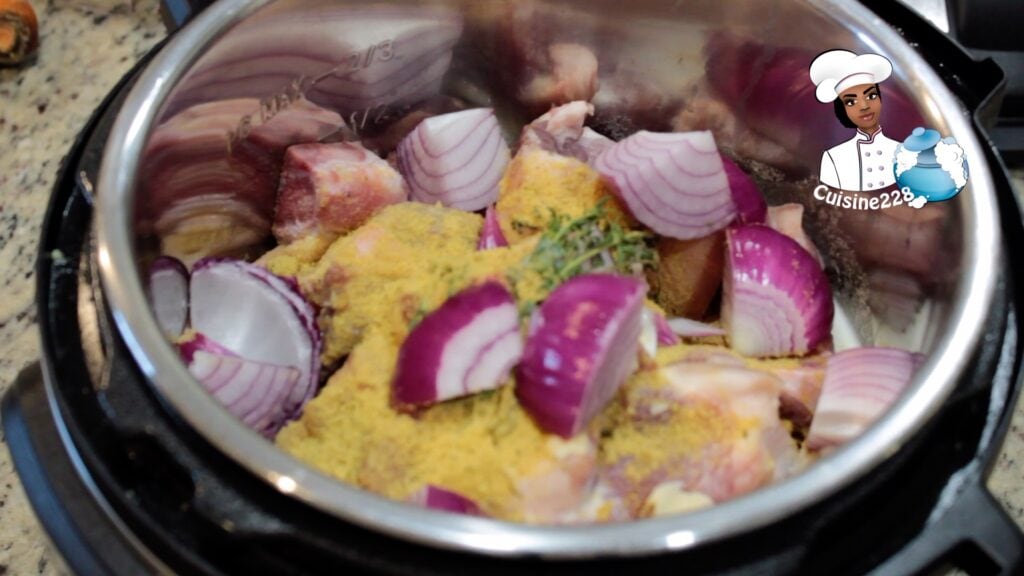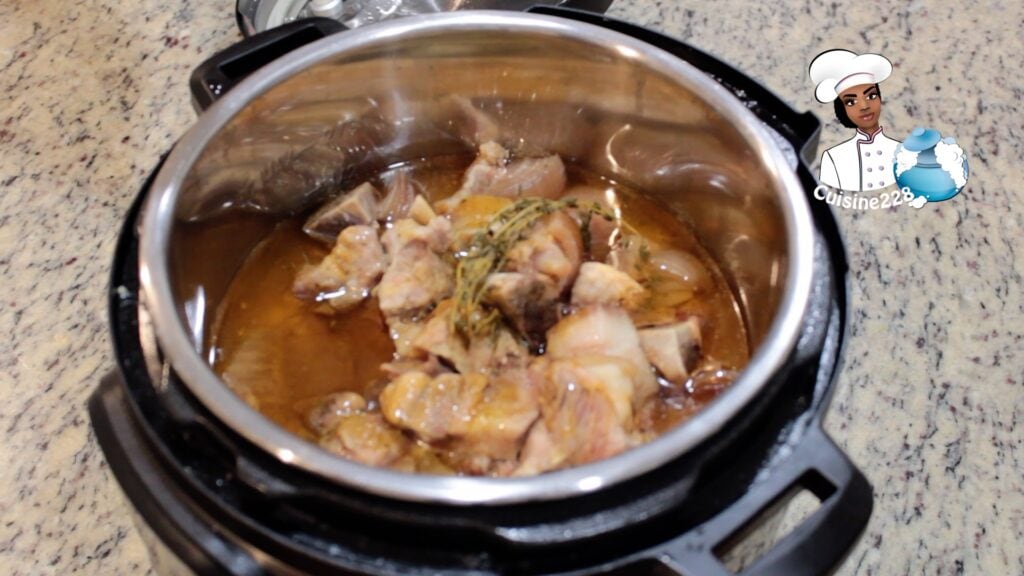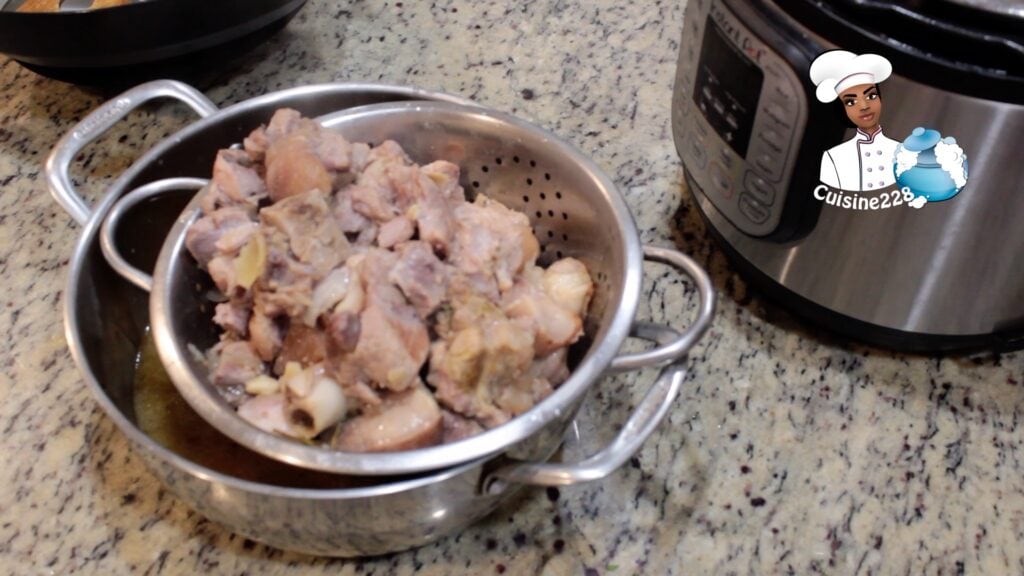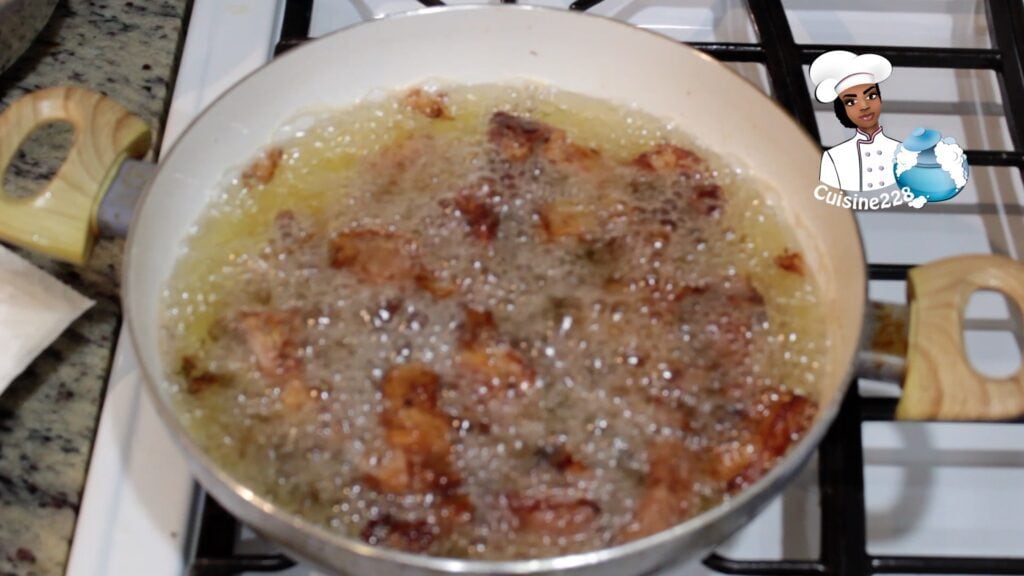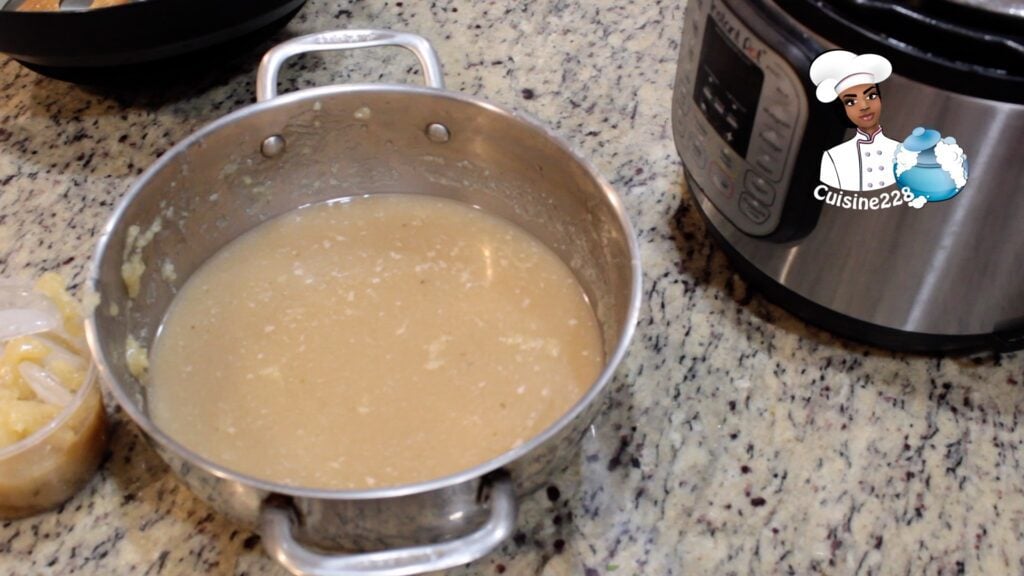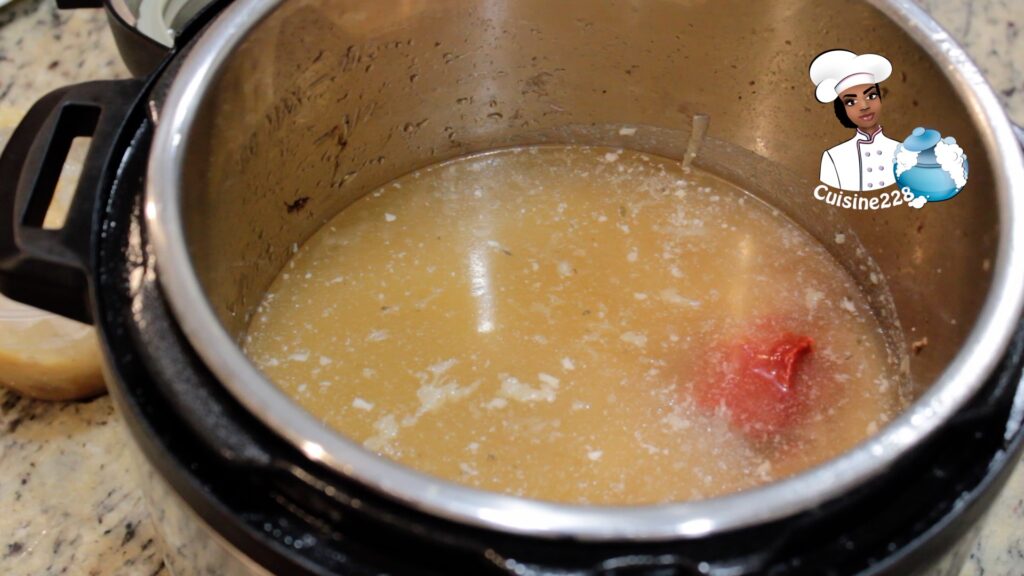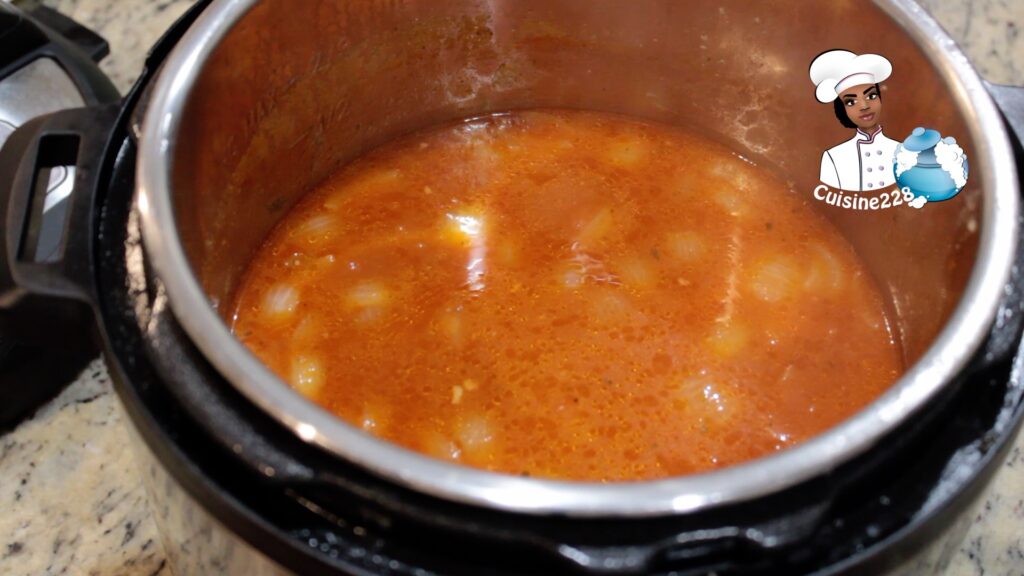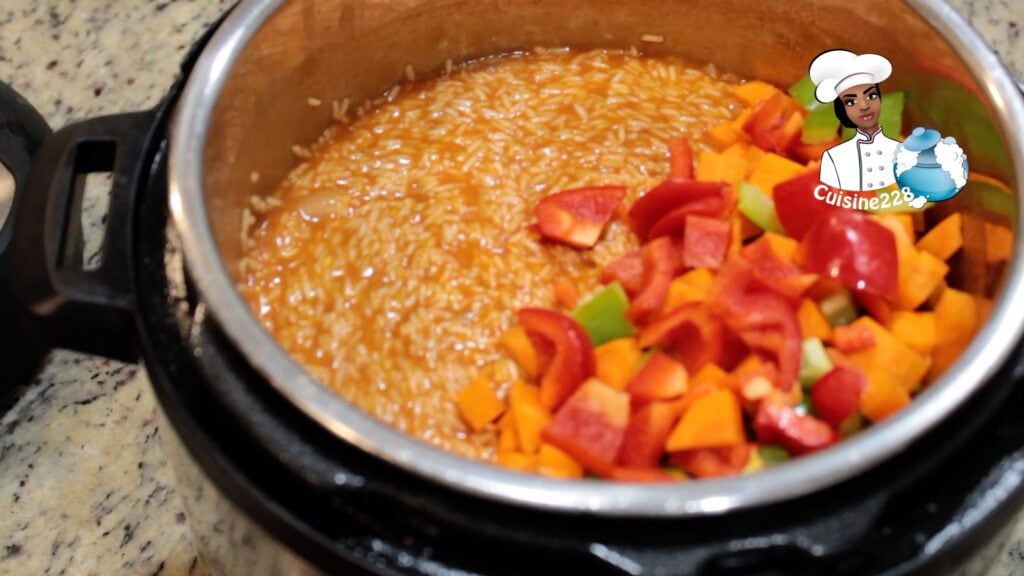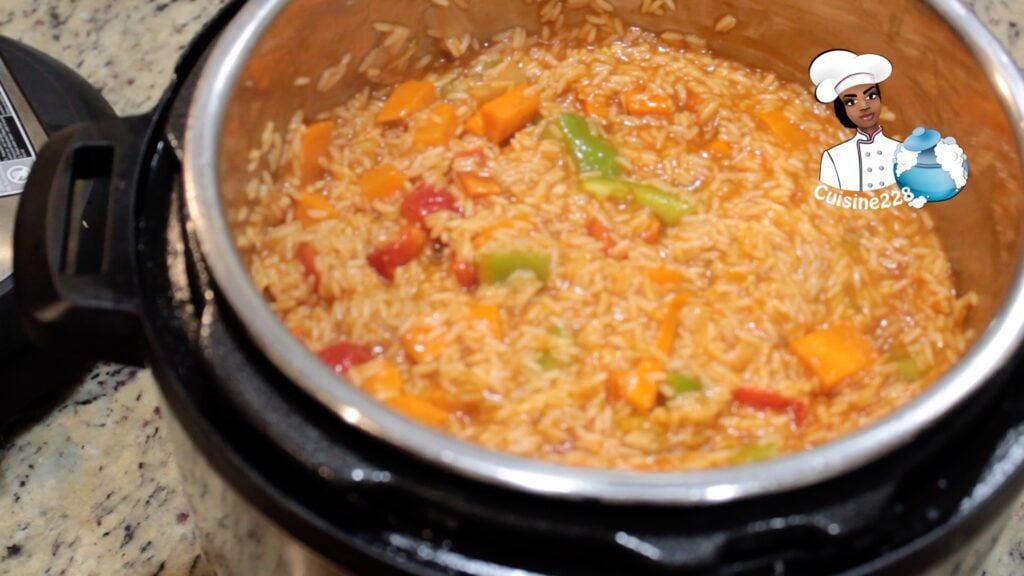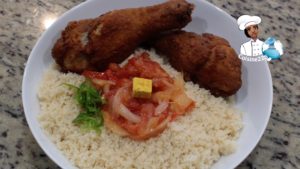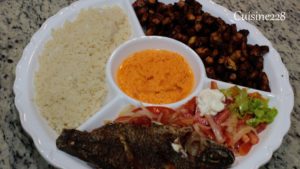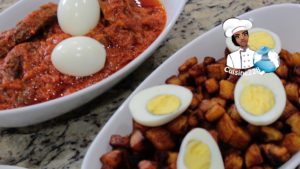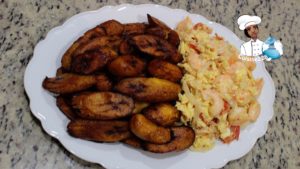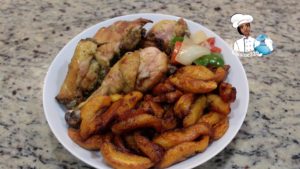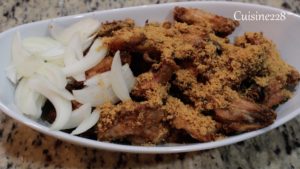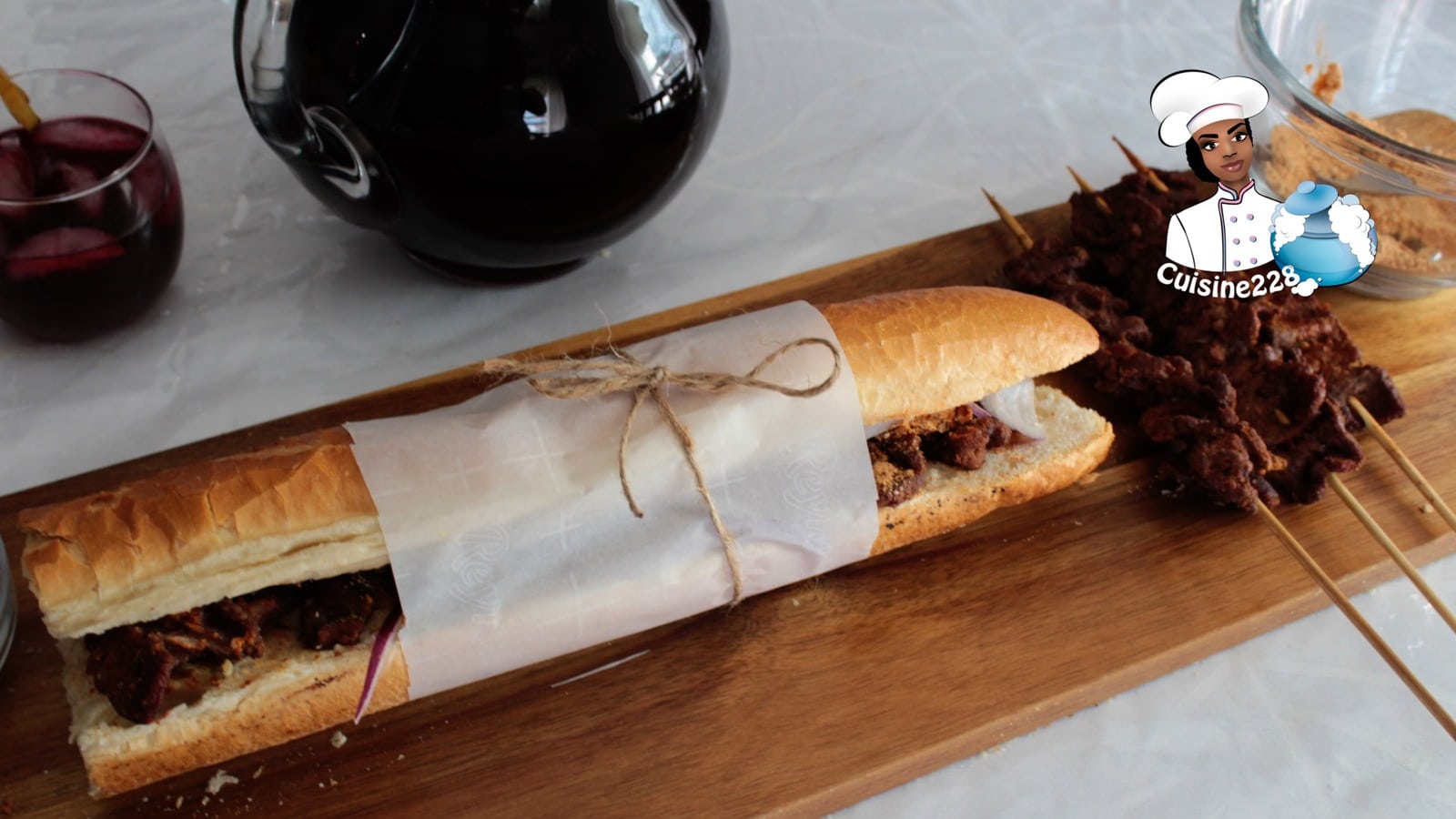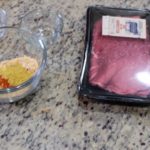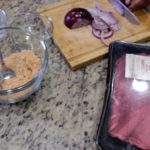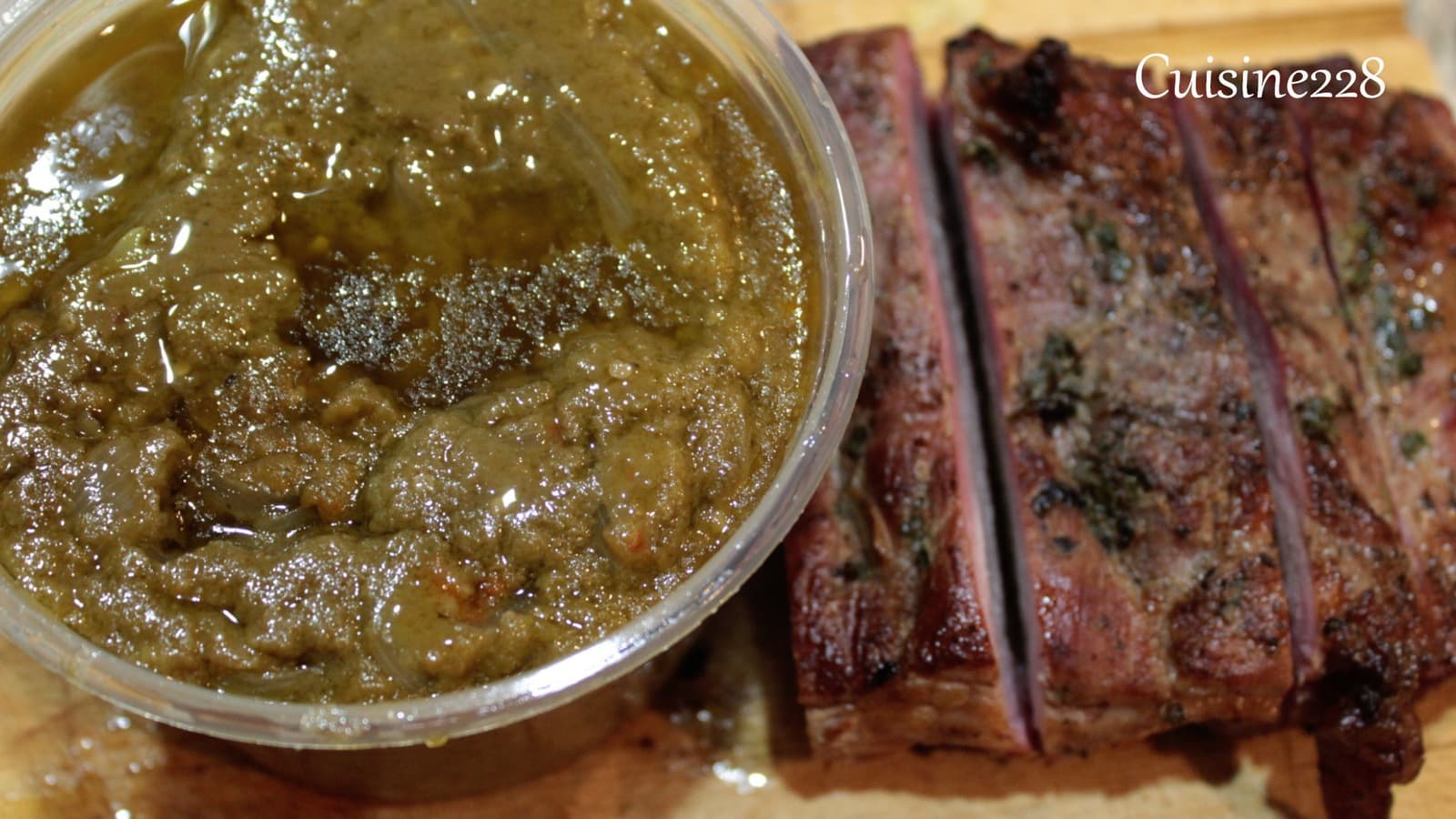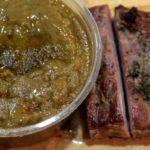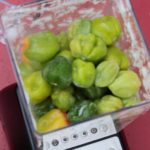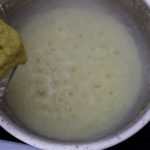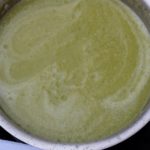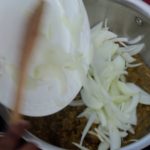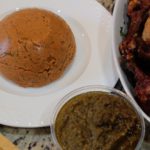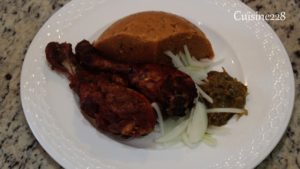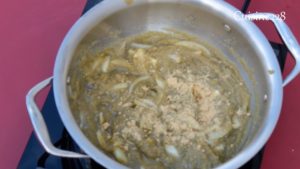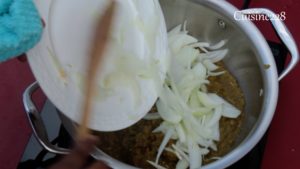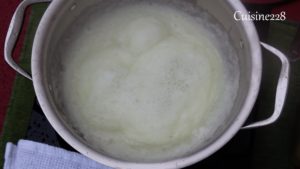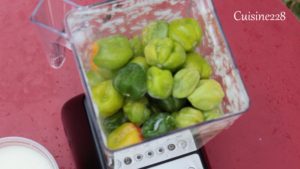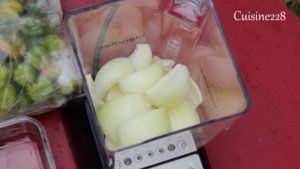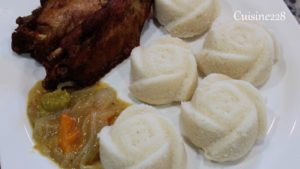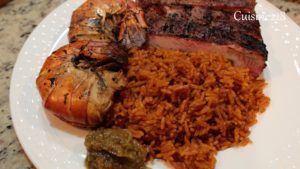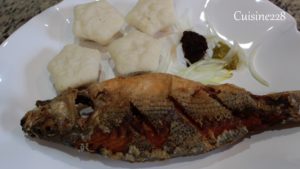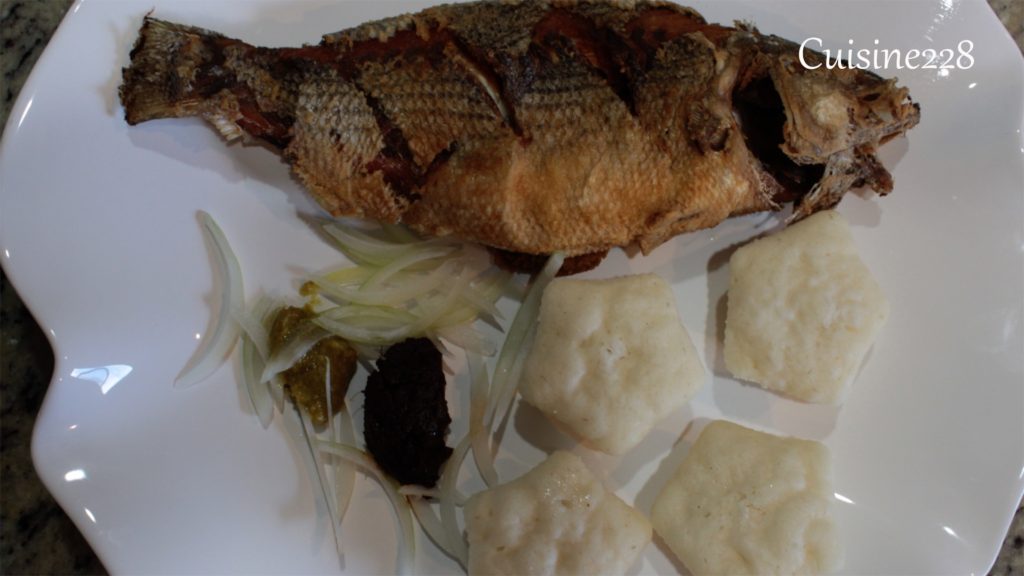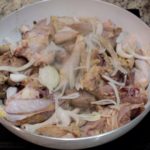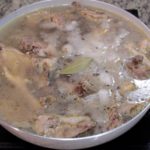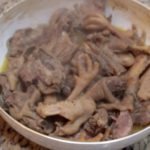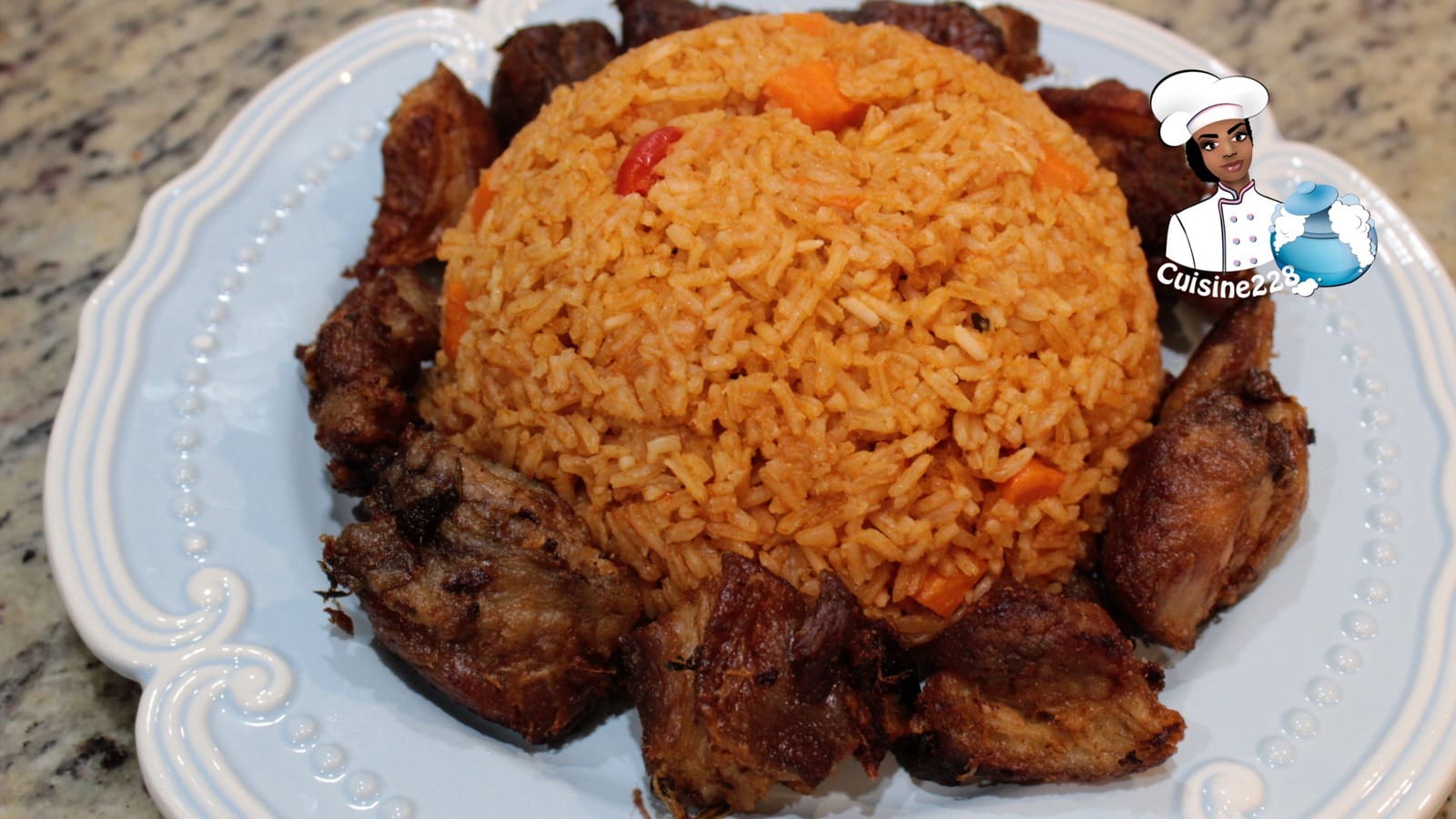
For this recipe of pork griot and Jollof rice, I combined my West African culture and Haitian experience. Pork griot is one of Haiti’s favorite’s dishes. To make the griot, big and fatty chunks of pork shoulder are marinated with limes juice, garlic, ginger, fresh thyme, onion, bouillon powder and salt, then boiled and finally fried until golden and crisp. Traditionally, the pork griot is served with Pikliz, which is a mixture of cabbage, carrot and chili pepper pickled. The acidity of Pikliz balances out the richness of the griot, but for this recipe I chose to serve it with some Jollof rice.

How to make the a tasty a crispy pork griot ?
Do you know that Pork is the world’s most popular type of meat? Yes, it is. Though not exactly a health food, moderate consumption of properly prepared pork can be an acceptable part of a healthy diet. For the griot, I love to season the pork overnight to guarantee a tasty and tangy taste. Once the pork has being marinated overnight, it is browned, the chunk of pork should be separated from the broth and cooled. Lastly, the marinated – browned – cooled pork is fried in hot oil to obtain the griot.
What is Jollof rice for the griot?
The jollof is a pot of rice loaded with tomatoes, tomato paste, onions, scotch bonnet peppers, salt, spices and vegetable oil and more flavor than you’ll know what to do with. Furthermore, vegetables, meat or meats and different types of local spices can be added to personalize it. The secret to a good jollof rice is the flavor build in the tomato broth and oil coupled with the perfect ratio of rice. As far as I can remember, jollof rice is served at every west African party. The jollof rice originated from Senegal and is a popular dish served in Nigeria, Cameroon, Ghana, Senegal, Togo, and Sierra Leone. The recipe varies lightly from one country to the next. The two main version are Ghanaian Jollof Vs Nigerian Jollof.
Ingredients for Griot
- 1.5 kg pork (shoulder Cut in bite size)
- 1-3 limes (juice) about 2 Tablespoons
- 5 teaspoons minced garlic
- 2 teaspoon ginger
- 3 teaspoon fresh thyme
- 1 medium onion sliced
- 1 tablespoon chicken bouillon powder
- 2 Teaspoons salt or more
How to make the Haitian pork griot?
Marinate the pork with lime juice, salt, chicken bouillon, garlic, ginger, onions, thyme, scotch bonnet pepper (optional).
Let it rest in the fridge for about 2 hours or preferably overnight.
In a saucepan on medium heat, bring to a boil and simmer until tender for about an hour or more.
When pork is tender remove from liquid and any bits of spices, herbs of the pork. Set aside pork.
Fry the pork at 350F (180C) until the pork is crispy.
Using a sieve drain pork liquid, reserve the liquid and discard the rest of the herbs and spices. (I use ice to cool down the mixture and remove the excess oil)
Place pork liquid in a small saucepan on medium add 1 teaspoon tomato paste, 1 cup tomato, 1/4 cup oil, sliced onion and bring to a boil.
Add the rice (2 cups water for 1 cups jasmine rice). Salt to taste. Add the cut vegetables (carrots and bell pepper).

Stir in rice and boil over medium-high heat until the water evaporates
Be sure the lid fits tightly on the pot. Turn down the heat to its lowest setting. Let the rice simmer for about 18 minutes, then remove from heat and allow the rice to steam in the pot for another 5 minutes.
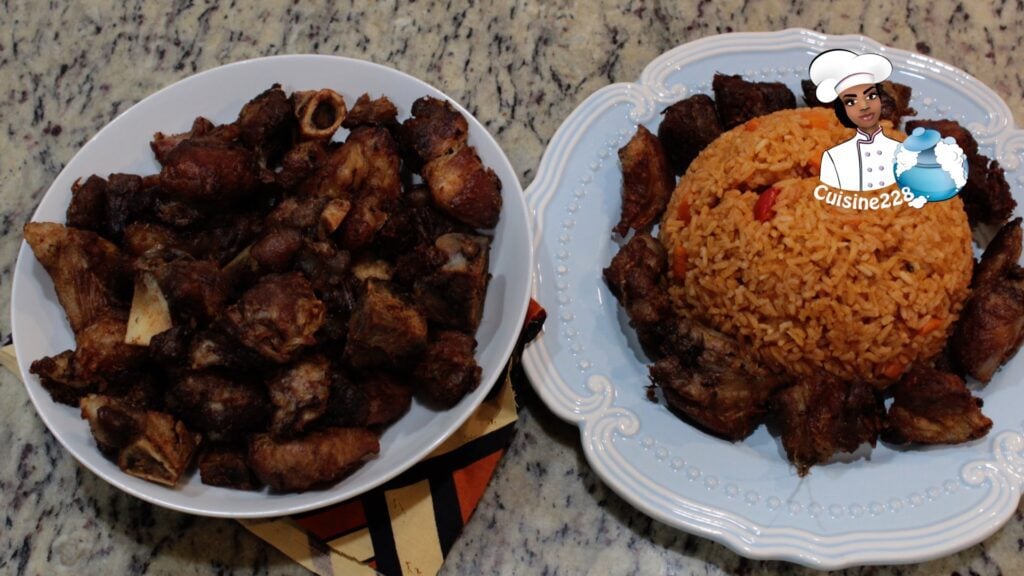
Serve the rice with the griot.
Notes:
- Cleaning the pork with vinegar or lemon juice is a test to see if the meat is still good. If the pork smells “off” even after its vinegar or lemon juice bath, chances are it’s not okay to cook.
- The vinegar or lemon juice tenderizes the pork, cuts down on cooking time, and lets you store pork for a little longer in the fridge if you end up not cooking it the day you prep it.
- The FDA currently does recommend against rinsing meat, however, in the African/Caribbean, there’s a common practice of rinsing off the meat and fish with a mild acid like lemon or lime juice or vinegar prior to cooking.
- Before everyone owned a refrigerator, cooks would apply an acidic solution because they believed it killed any bacteria on the bird and to impart a little extra flavor. Currently, many folks use this same technique to get rid of any odors and add flavor to the meat.

